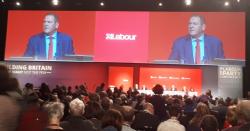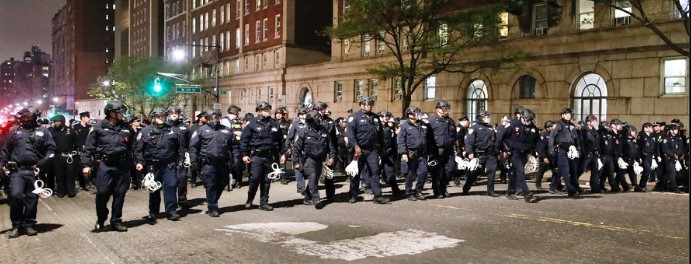By John Pickard, Brentwood CLP delegate, personal capacity
Labour Party conference has opened with the most radical delegations for decades, at least measured by the Constituency Labour Party (CLP) delegates. It has been estimated that more than 85 per cent of the CLP are supporters of Momentum, or on the left of the Party.
Once the formalities were out of the way, there was an immediate controversy over the report of the Conference Arrangements Committee (CAC). Delegates felt that the way the National Executive Committee (NEC) had rushed through constitutional changes and presented them to delegates with only a short time to digest them was an affront and, moreover, it effectively stymied debate on the reselection of Labour parliamentary candidates, an issue that has been hanging over since last year’s conference. Delegates were extremely unhappy with the ‘rush’ to discuss the NEC proposals to the detriment of CLPs who had been wanting to discuss the issue.
When delegates moved that the CAC report be rejected, there was overwhelming support for this on a show of hands. The chairman went to a show of hands for CLP delegates only and no more than around 15-20 voted for the CAC report. A sea of hands rose from the CLP delegations against. A show of hands from the trade unions, however, showed the opposite. Apart from the Fire Brigade Union, most union delegates, especially the big unions, voted to back the CAC. Conference then went to a card vote, in which the unions have 50 per cent of the conference vote and the CLPs the other 50 per cent. This vote was not announced until the afternoon, but it resulted in 53.6% in favour of the CAC and 46.4% against, showing the huge gulf between the trade union and the CLP delegations.
Most of the rest of the day was given over to debates on the recommendations of the outgoing NEC (bearing in mind that the new NEC will be more strongly on the left) in relation to the Democracy Review. The NEC were bringing forward a number of rule changes arising from the Review. These were divided into eight sections, with a corresponding card vote for each one. Six of the issues were relatively uncontentious, although there were speakers on all of them. The two issues that evoked the greatest controversy were the rule changes relating to the election of the Party leader and the changes relating to selection of Labour candidates.
Leadership election rules
Card vote number 6, relating to the election of the Party leader, would change the wording of that section of the constitution to read as follows:
“In the case of a vacancy for leader or deputy leader, each nomination must be supported by 10 per cent of the combined Commons members of the PLP and members of the EPLP and either:
a. 5 per cent of CLPs; or
b. At least 3 affiliates (at least 2 of which shall be trade union affiliates) comprising 5 per cent of affiliated membership.
Nominations not attaining the thresholds under either a or b above shall be null and void”
Many delegates thought this was fundamentally undemocratic. Matt Wrack, of the FBU, for example, pointed out that for national officers, candidates only need the nomination of a single branch. Delegates from CLPs did not think that MPs in the parliamentary party (PLP) should have any veto over leadership nominations, notwithstanding the fact that the PLP input – only 5 per cent of MPs, is lower than it is now.
Card vote number 8 was even more contentious, dealing as it did, with selection of MPs. The new rule coming out of last week’s NEC meeting would have introduced the following wording into the constitution on the issue:
“A. If the sitting MP wishes to stand for re-election, a trigger ballot will be carried out through Party branches and affiliated branches according to NEC guidelines.
B. If either one third or more of Party branches, or one third or more of affiliated branches, indicate that they wish a selection to take place, a selection shall proceed. The MP shall be included in the shortlist of candidates from whom the selection shall be made. Where neither one third or more of Party branches, nor one third or more of affiliated branches, indicate that they wish a selection to take place the MP will, subject to NEC endorsement, be selected as the CLP’s prospective parliamentary candidate.”
The big majority of delegates who got to the rostrum were opposed to this “dog’s dinner” of a process, pointing out that ‘trigger ballots’ are more divisive, more negative and more open to dispute and challenge (eg over meetings being ‘quorate’ or not). Clearly angered at the outright disloyalty of the right wing of the parliamentary party, the big majority of CLP delegates were in favour of an Open Selection process for all CLPs for all elections, introducing a level playing field for every CLP irrespective of whether or not there was a sitting Labour MP.
Open selection favoured by CLP delegates
I was lucky enough to get into this debate and I pointed out that the last time I addressed a Labour Party conference was in 1974, when I spoke on mandatory re-selection. “I don’t want to come back in another 44 years and still be discussing the same issue.” In fact the mandatory selection of candidates – effectively ‘Open Selection’ under a different name – was introduced into Labour’s constitution after that battle, only for it to be rolled back under the Blair regime. I urged conference to reject the card vote number 8, leaving perfectly good resolutions from CLPs to stand. For example, ‘International Labour’ were putting forward the following version of the same rule change:
“A. If the CLP is not represented in Parliament by a member of the PLP, a timetable for selecting the next Westminster Parliamentary Candidate shall commence no sooner than six weeks after the election and complete no later than 12 months after the election.
B. If a CLP is represented in Parliament by a member of the PLP, then a timetable for selecting the next Westminster Parliamentary Candidate shall commence no sooner than 36 months and complete no later than 48 months after the election. The sitting Member of Parliament shall be automatically included on the shortlist of candidates, unless they request to retire or resign from the PLP”.
Momentum, to its shame, was supporting a positive vote in card vote 8, on ‘tactical’ grounds, arguing that it is an improvement (true) and the best we can get (not true). This retreat is not surprising, given that Momentum is a recent convert to reselection, in any case. For Momentum and its leader Jon Lansman, it looks like a case of one step forward and two steps back.
Momentum abandons Open Selection
As we publish this report, the card votes on the eight constitutional amendments have been given in and the results will be announced in conference the next day. Judging by the way the trade union delegations voted on the CAC report and the capitulation of the Momentum leadership, it is likely that the card votes will back the NEC amendments, which means that the CLP resolutions on the same issue will automatically fall. We’ll see.
In the next few days there will be a number of key debates. The delegates, divided again into CLPs and trade unions, balloted separately to establish eight topics they wish to debate. This unfortunately leaves out a number of key issues that can now only be dealt with in fringe meetings or outside conference. So there will be no resolutions on climate change, health and social care, the NHS, local government funding, tenants’ rights or the welfare system. The issues which the conference decided will be debated are: ‘An economy for the Many’, Brexit, Government contracts, Housing, In-work poverty, Justice for the Windrush generation, the School System and Palestine. This latter is felt by the big majority of delegates as an ‘acid test’ for Labour’s ‘ethical’ foreign policy stance, as witnessed by a packed meeting, with around 300 delegates at the Palestine Solidarity Campaign fringe meeting.
September 23, 2018.



